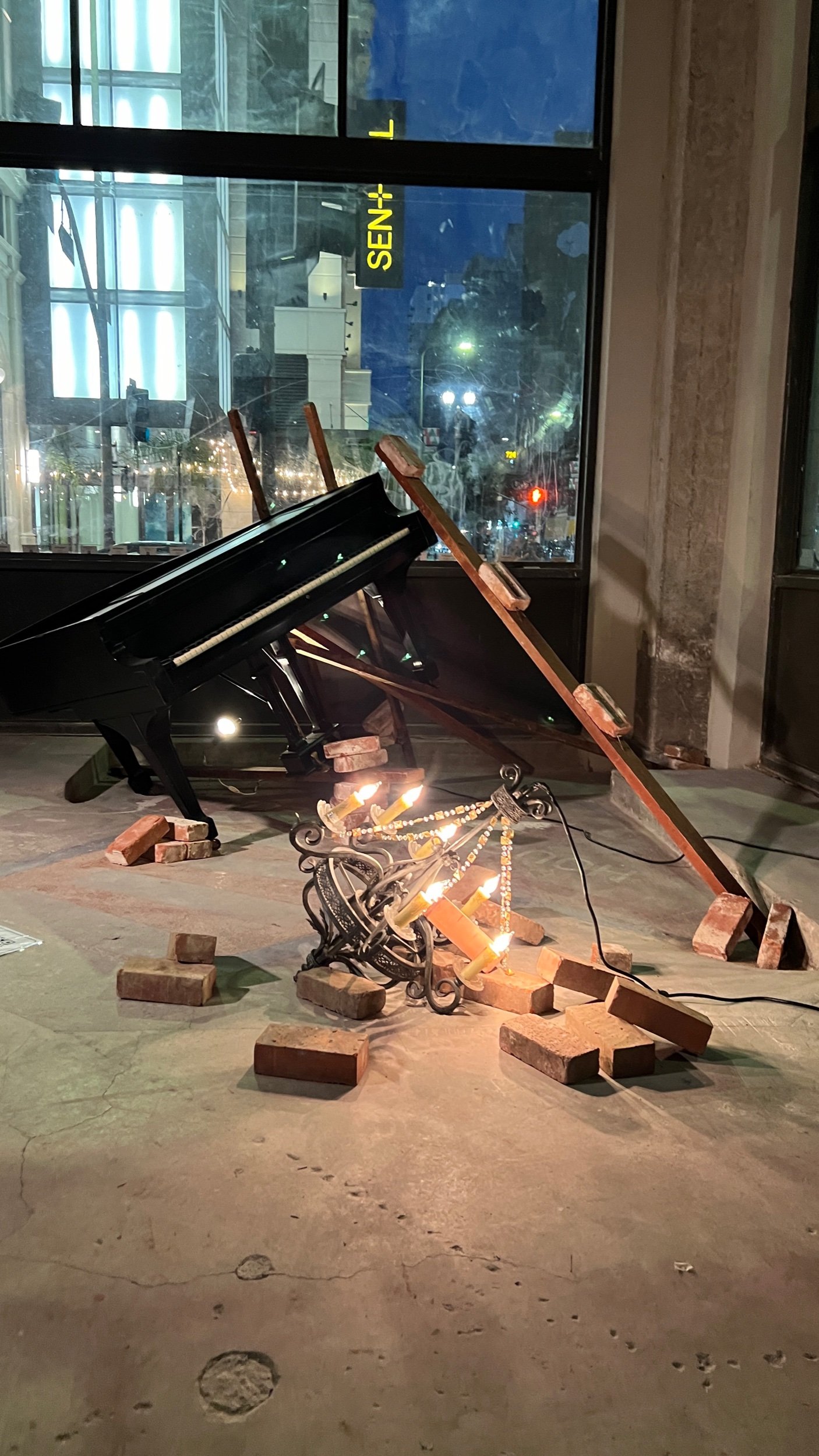
This installation by Noé Piña explores the fragile balance of personal, economic, and social systems. A baby grand piano, elegant yet exposed, teeters atop repurposed wood and bricks—symbols of labor and Piña’s childhood near a brick factory in Guadalajara. Nearby, a chandelier tilts on the floor, surrounded by bricks, glowing despite its fallen state. The contrast between luxury and raw materials reflects the tension between class and labor, stability and collapse. Playful yet sobering, it asks: what happens when balance is lost?
Repurposed & found materials, terracotta bricks wood planks, nails, baby grand piano, chandelier 2025
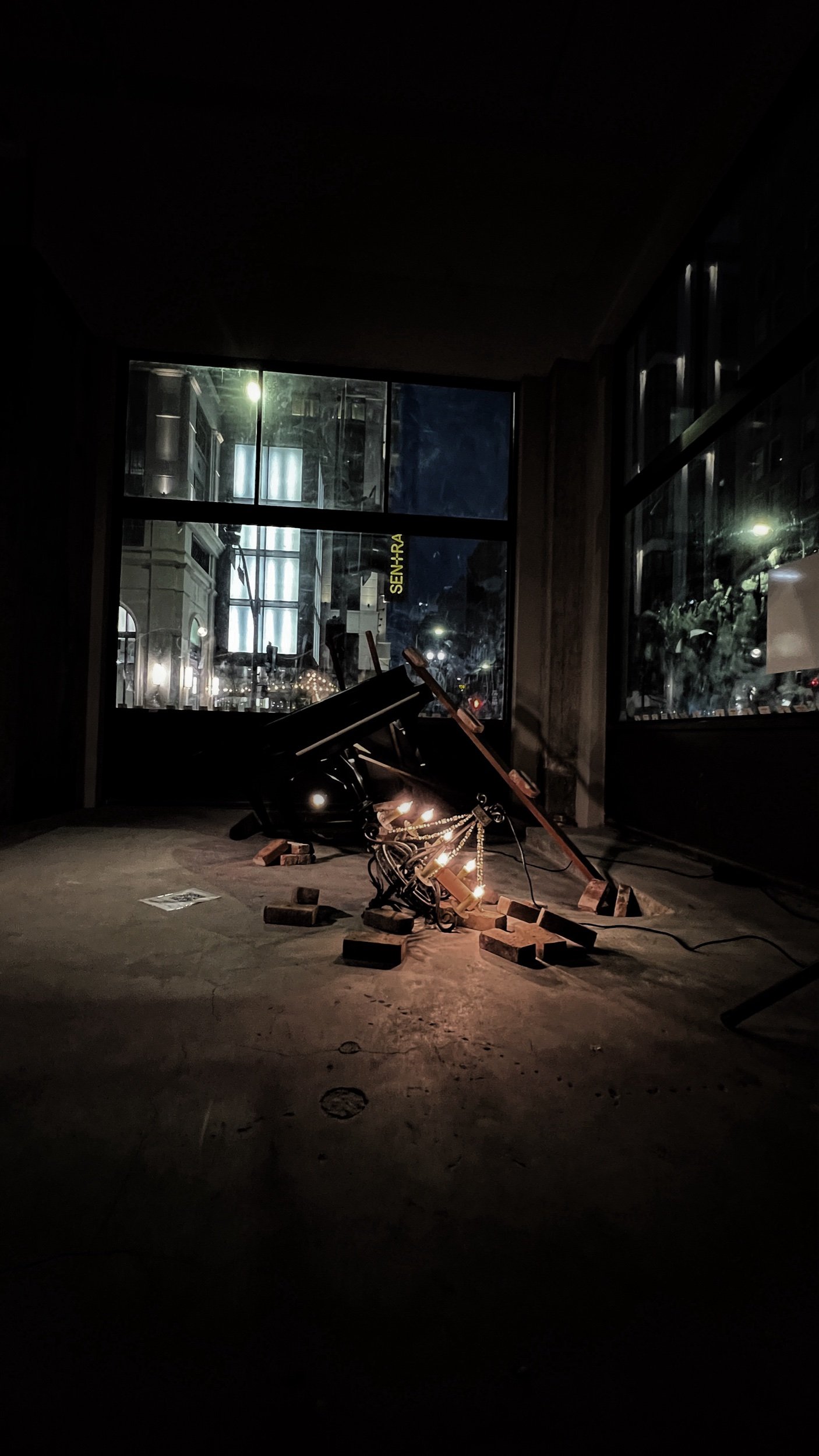
This installation by Noé Piña explores the fragile balance of personal, economic, and social systems. A baby grand piano, elegant yet exposed, teeters atop repurposed wood and bricks—symbols of labor and Piña’s childhood near a brick factory in Guadalajara. Nearby, a chandelier tilts on the floor, surrounded by bricks, glowing despite its fallen state. The contrast between luxury and raw materials reflects the tension between class and labor, stability and collapse. Playful yet sobering, it asks: what happens when balance is lost?
Repurposed & found materials, terracotta bricks wood planks, nails, baby grand piano, chandelier 2025

Repurposed & found materials, terracotta bricks wood planks, nails, baby grand piano, 2024
This installation by Noé Piña invites viewers to reflect on the delicate equilibrium of the systems we inhabit—personal, economic, and social. A baby grand piano, elegant and refined, yet exposed and vulnerable with its missing lid teeters at an angle, precariously supported by repurposed wood planks studded with nails. Balancing atop and beneath these planks are bricks—symbols of labor, construction, and Piña’s childhood memories of growing up next to a brick factory in Guadalajara, Mexico.
The juxtaposition of materials speaks to the fragility of balance, where the weight of luxury and class (the piano) is held in place by the raw and rough (the bricks and planks). This contrast becomes a metaphor for the tension between economic and social divisions, not presented in protest but as an enduring and unresolvable reality of the human condition.
There is a playful nostalgia in the work, evoking the teeter-totters of Piña’s youth, where balance was a physical and experiential lesson. Yet, the precariousness of this composition reminds us of the instability that comes when systems—whether personal or societal—fall out of balance. The work invites us to confront the fragility of what we often take for granted, leaving us to question: what happens when balance is lost?
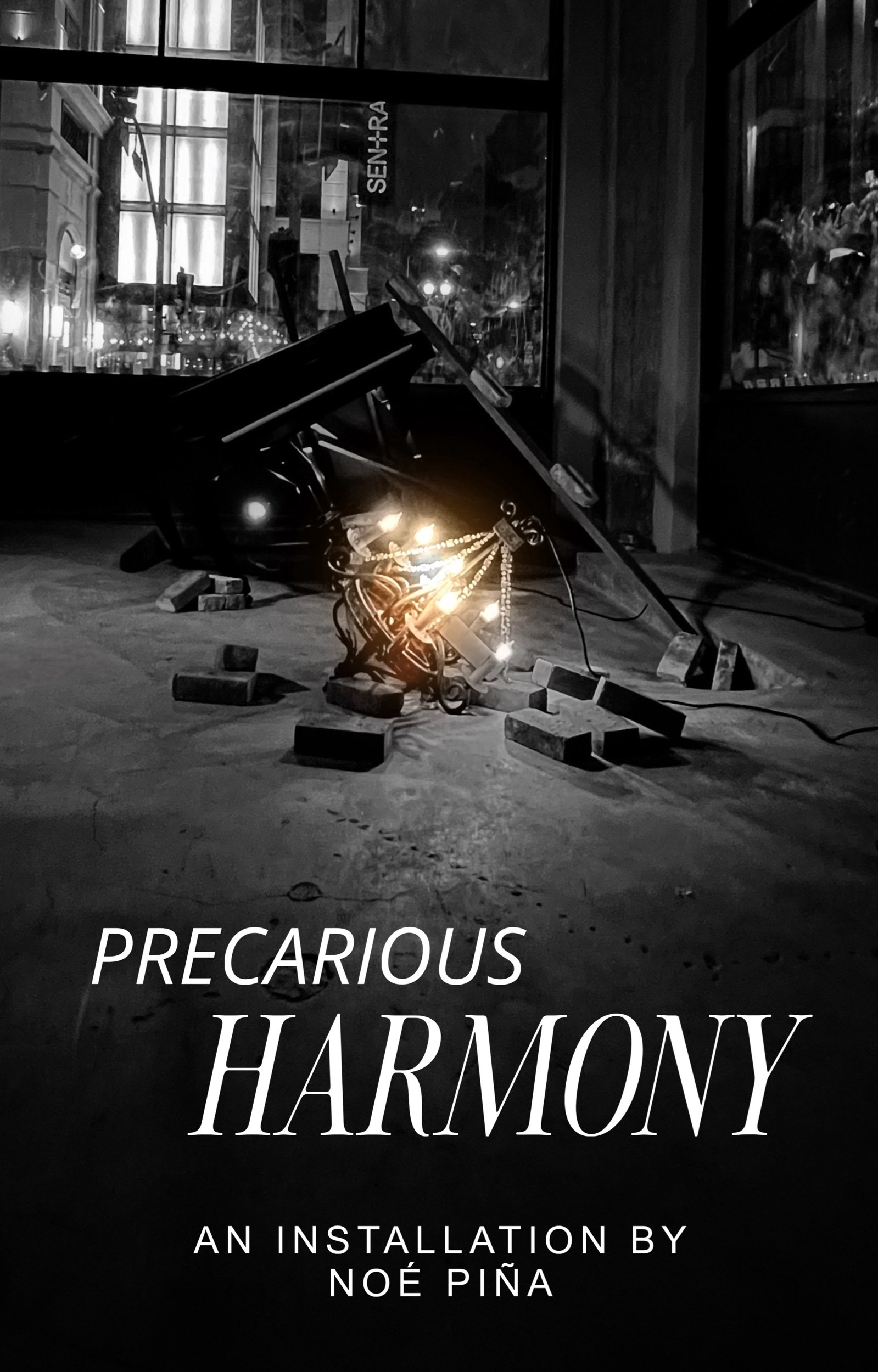
This installation by Noé Piña explores the fragile balance of personal, economic, and social systems. A baby grand piano, elegant yet exposed, teeters atop repurposed wood and bricks—symbols of labor and Piña’s childhood near a brick factory in Guadalajara. Nearby, a chandelier tilts on the floor, surrounded by bricks, glowing despite its fallen state. The contrast between luxury and raw materials reflects the tension between class and labor, stability and collapse. Playful yet sobering, it asks: what happens when balance is lost?
Repurposed & found materials, terracotta bricks wood planks, nails, baby grand piano, chandelier 2025
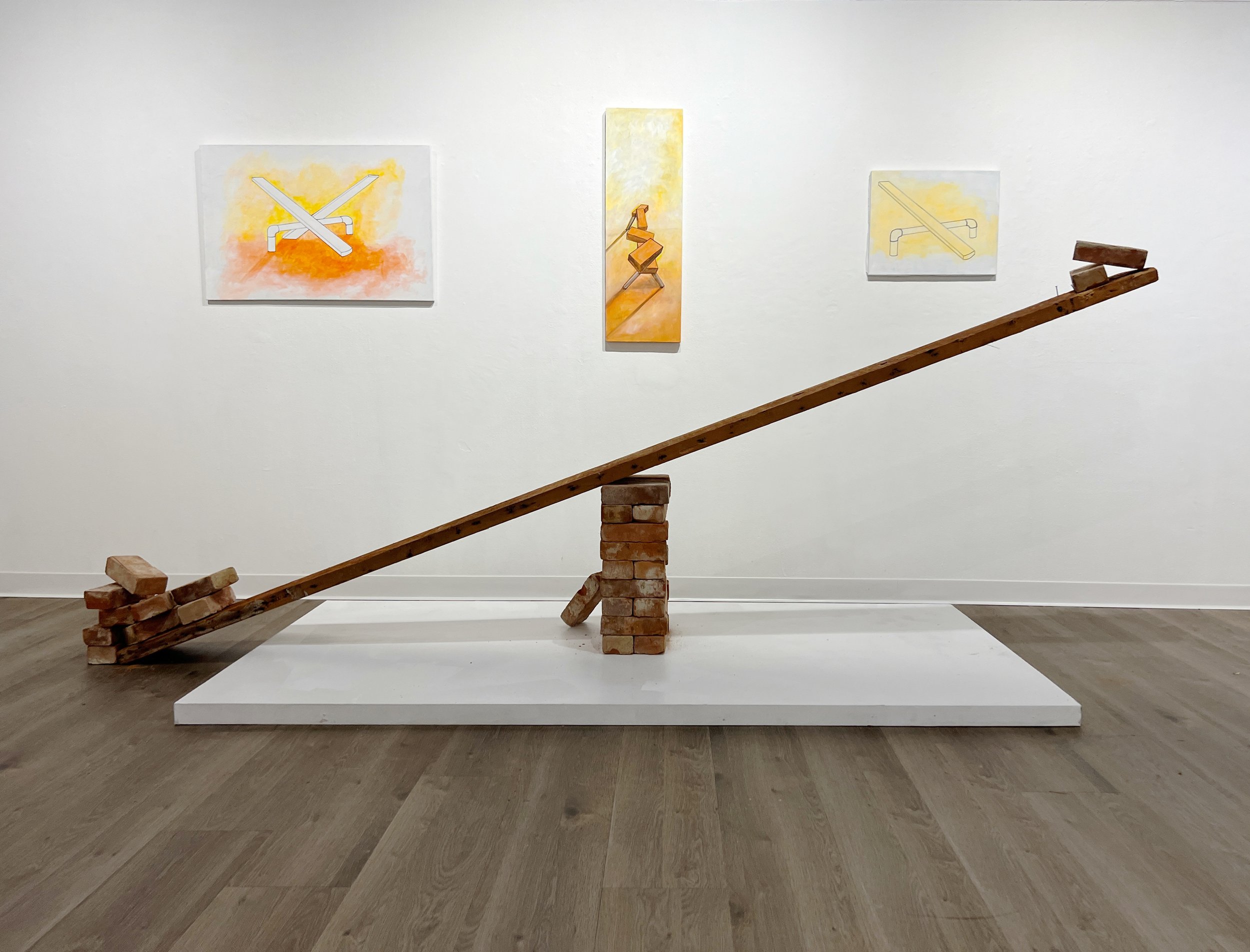
This sculptural installation by artist Noé Piña features a large seesaw-like structure constructed from reclaimed terra-cotta bricks and wood planks, materials rooted in Piña’s personal and familial history. Positioned atop a stack of bricks, the wooden beam balances precariously—its weight distribution suggesting themes of labor, inequality, and resilience. In the background, three vibrant paintings echo the forms and colors of the sculpture, reinforcing a narrative of construction, struggle, and transformation. The piece invites viewers to reflect on systems of support and the delicate equilibrium required to sustain growth.

The Balancing Act of Music
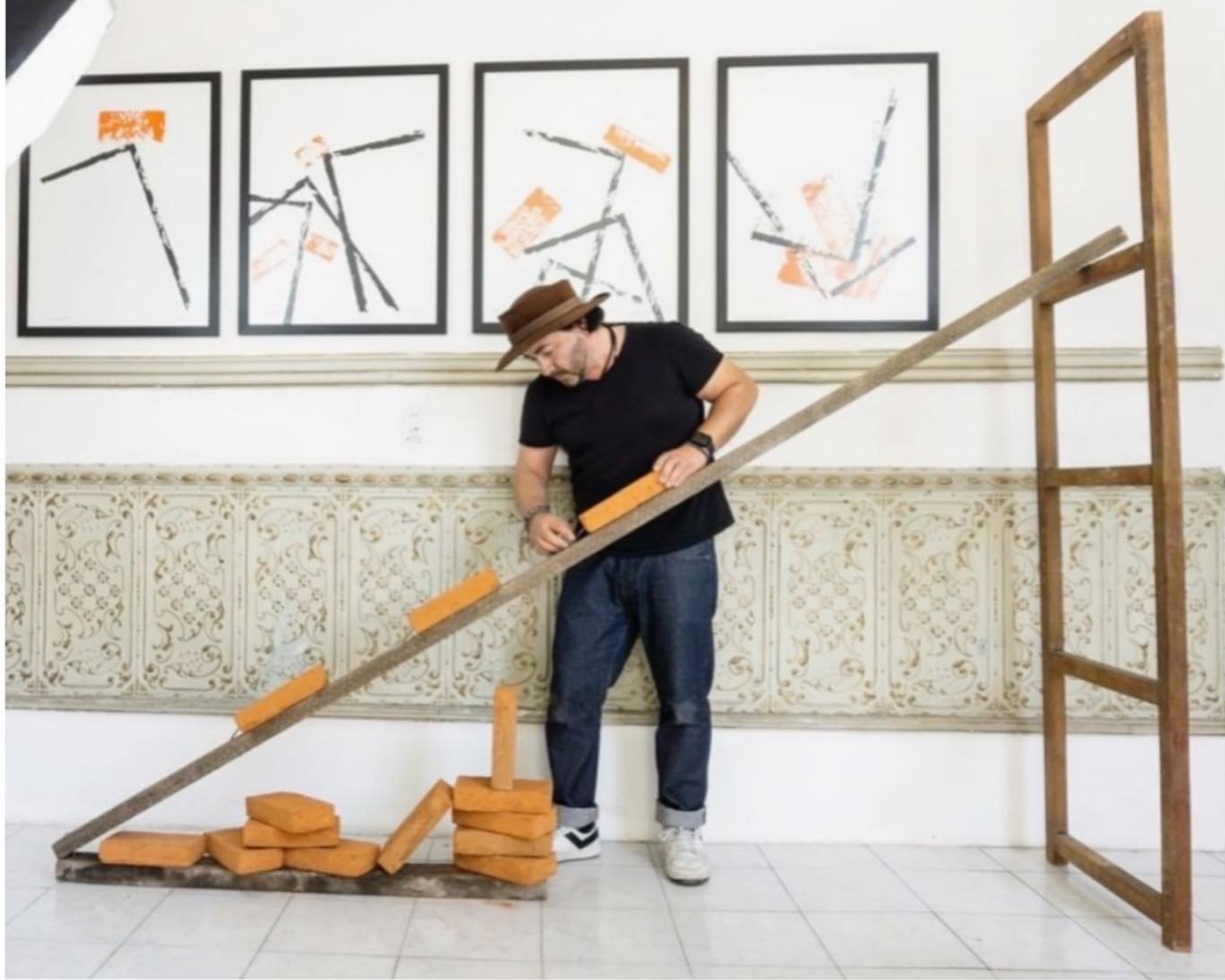
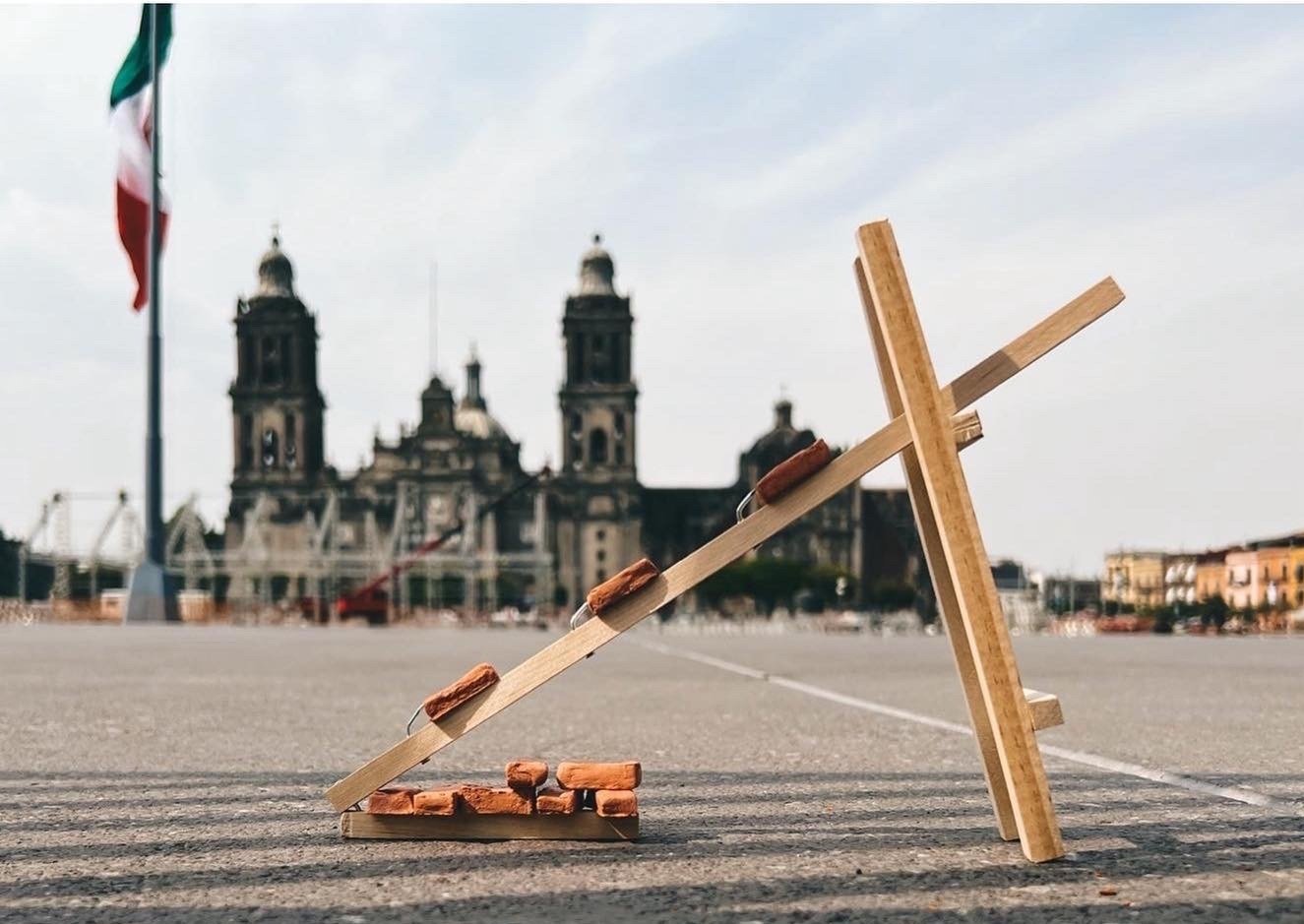

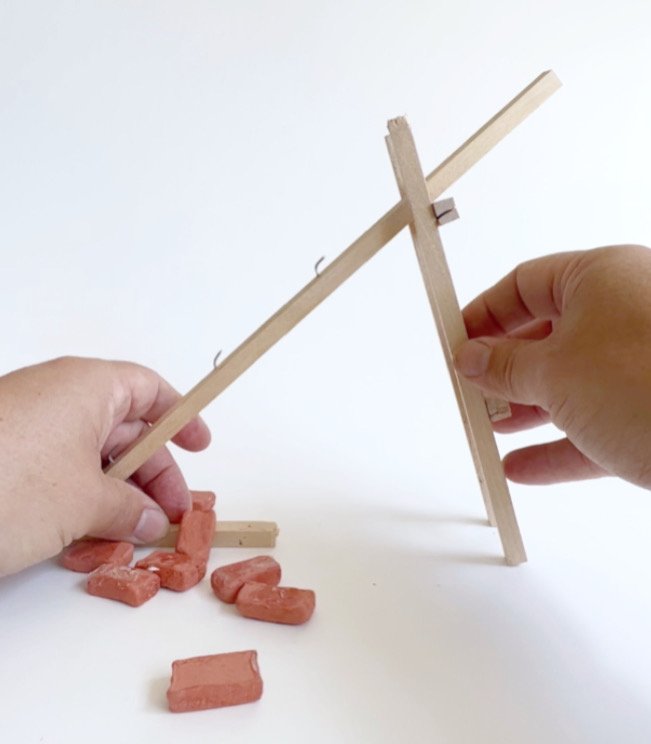
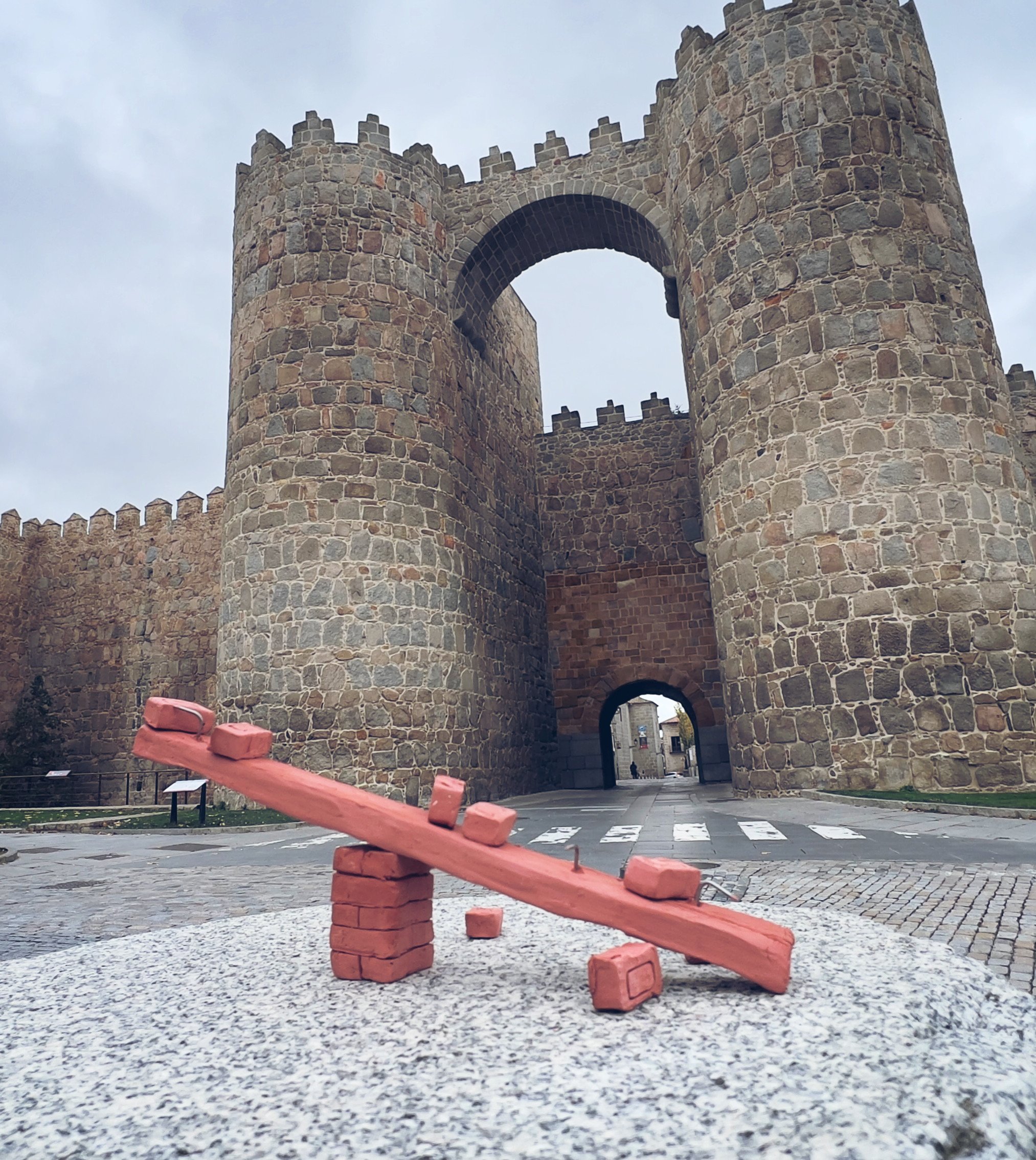
This photo captures a site-specific miniature sculpture by Noé Piña, positioned before the iconic medieval Walls of Ávila in Ávila, Spain. The small-scale seesaw, crafted from hand-formed, red-toned bricks and wooden beams, mirrors Piña’s larger works—exploring equilibrium, labor, and resilience. By placing this intimate sculpture against the monumental backdrop of Ávila’s fortified walls, Piña draws a dialogue between personal memory and historical permanence, inviting reflection on the endurance of both structures and people across generations.

Walls of Avila, Spain 2024
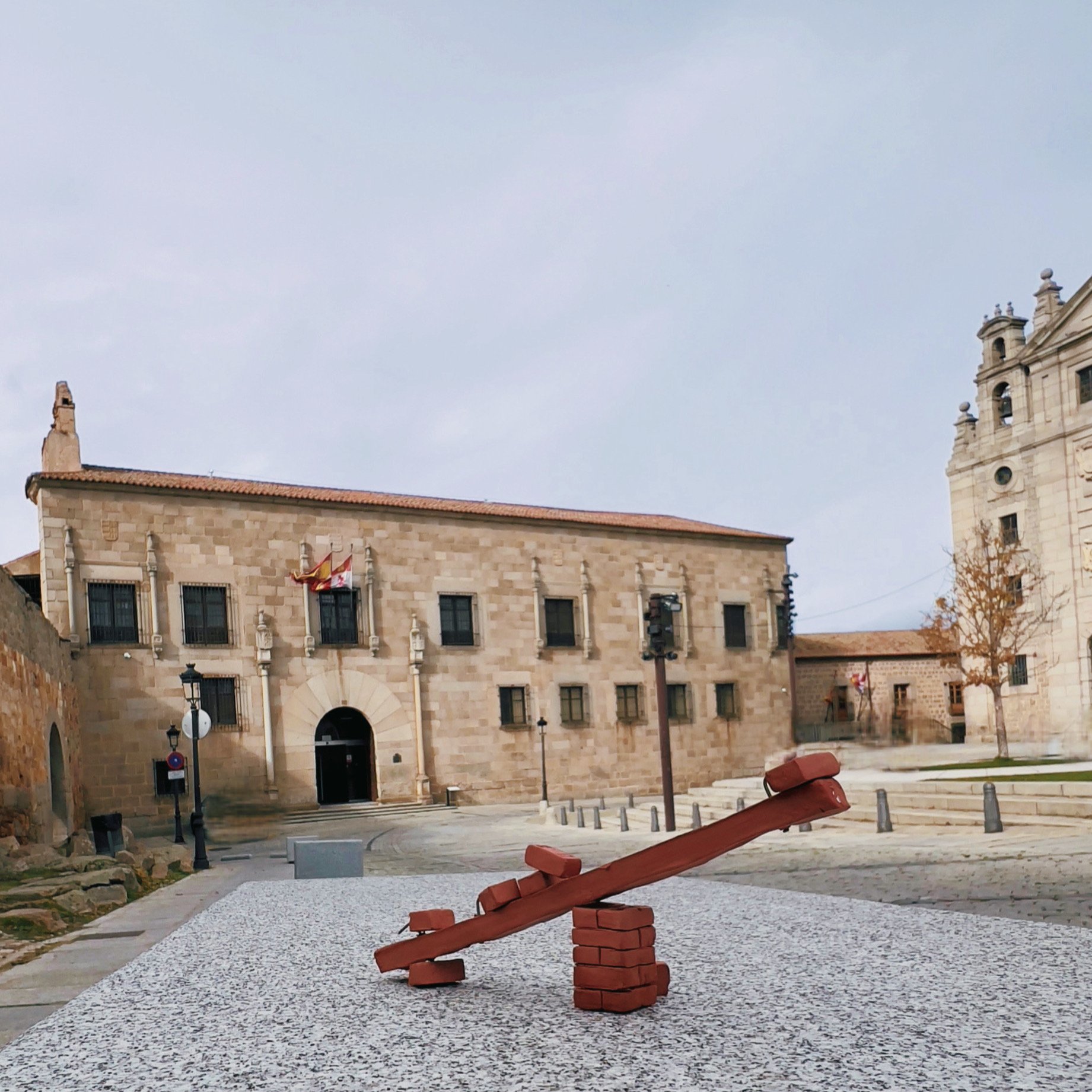
Set in front of the Palacio de Blasco Núñez Vela, and The Cathedral of Saint Teresa in Ávila, Spain, this sculptural intervention by Noé Piña continues the artist’s exploration of balance, resistance, and spatial dialogue. The small-scale seesaw sculpture, composed of red bricks and wooden planks, echoes themes of architectural weight and human resilience. By placing this delicate construction amid monumental historic architecture, Piña creates a visual and conceptual contrast that invites viewers to consider the interplay between personal memory and institutional power.
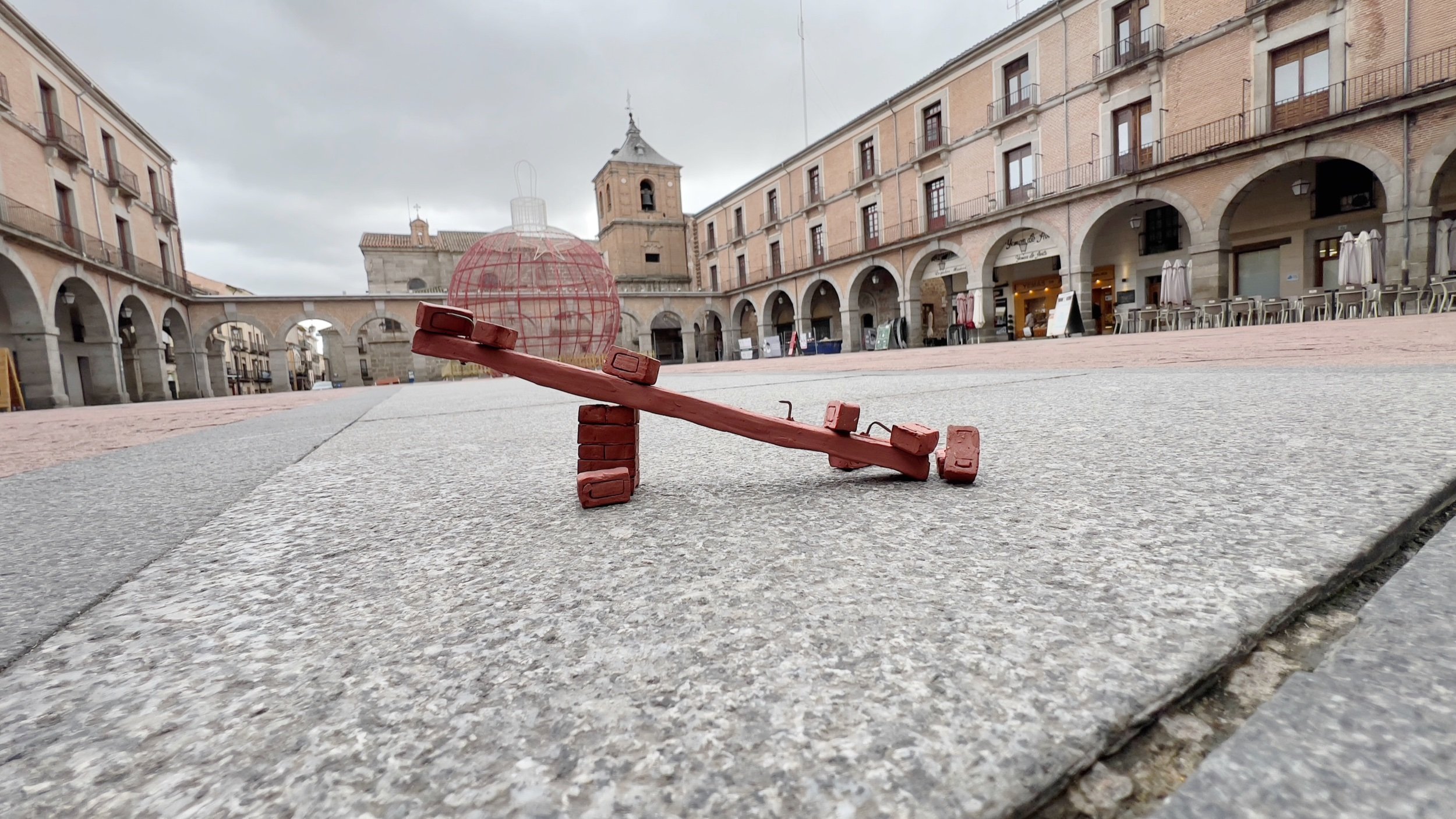
Plaza Mayor, Avila Spain 2024
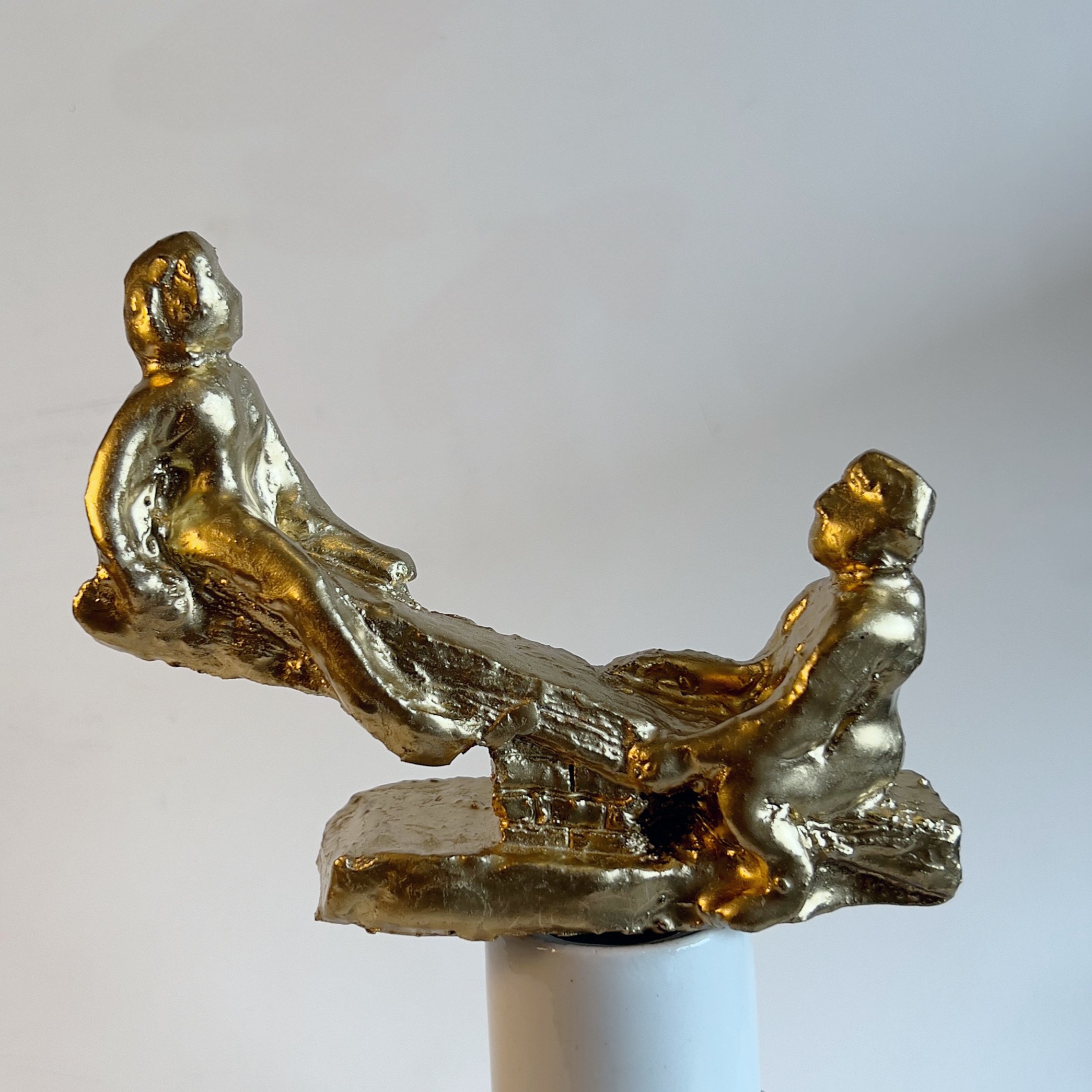
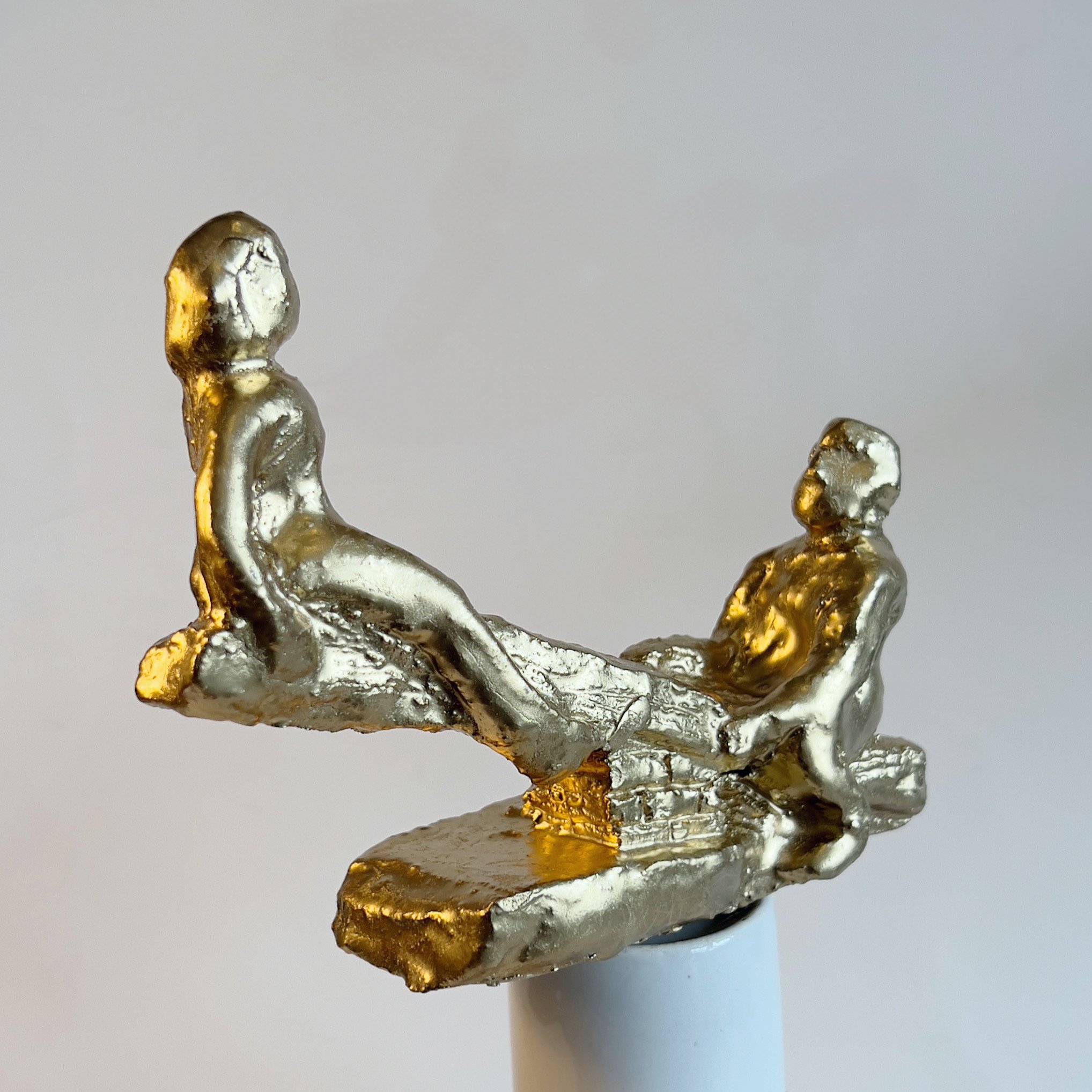
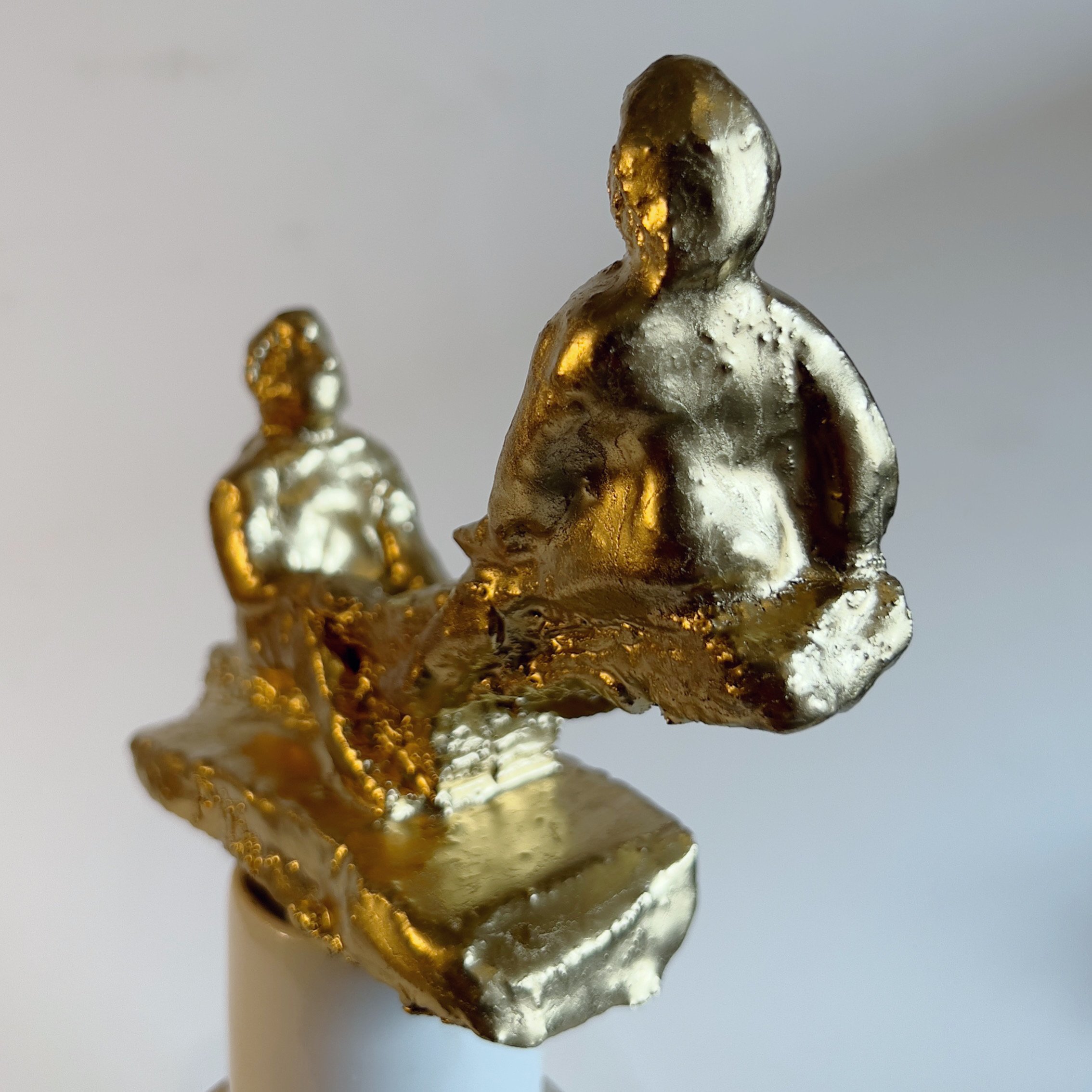

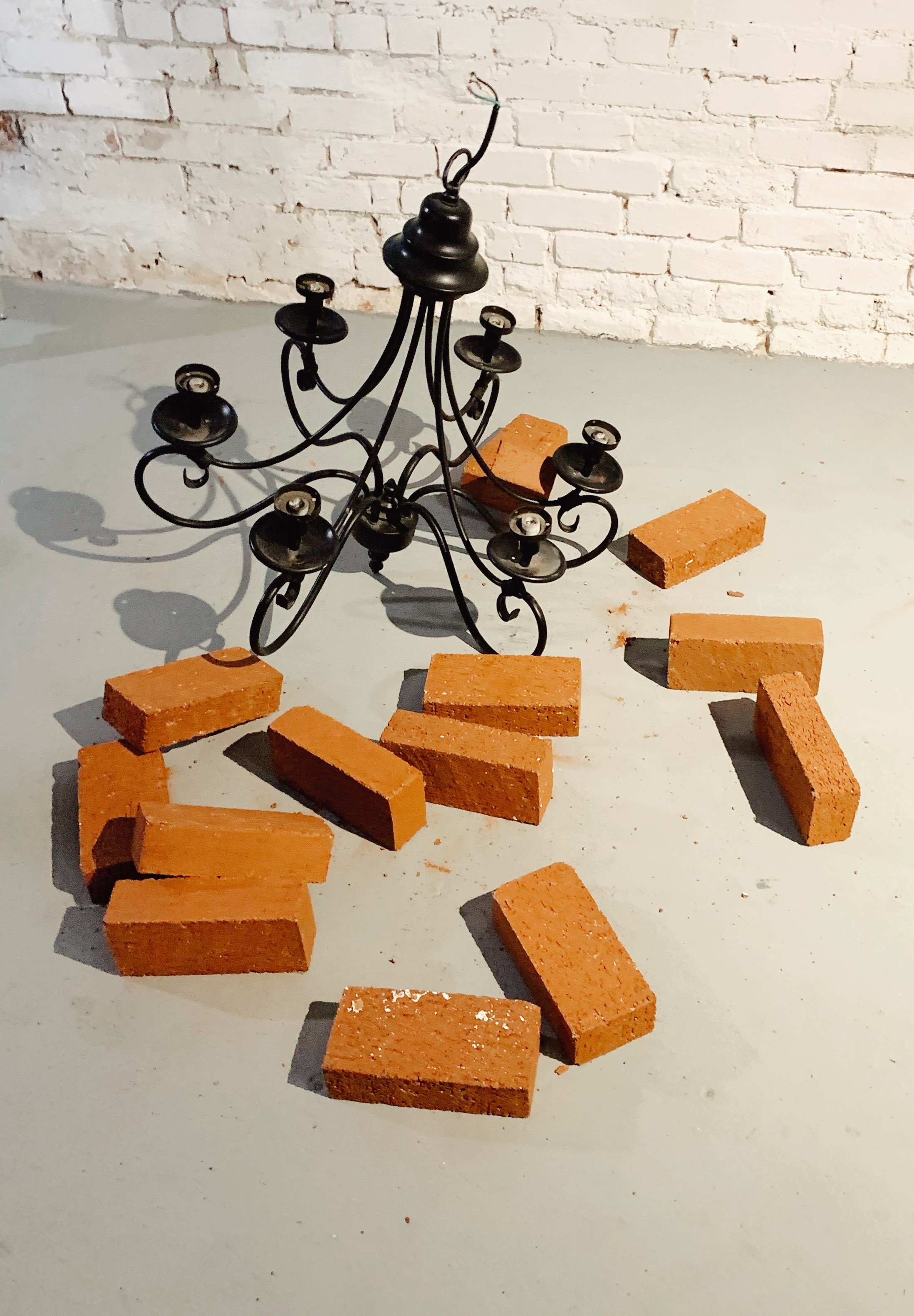
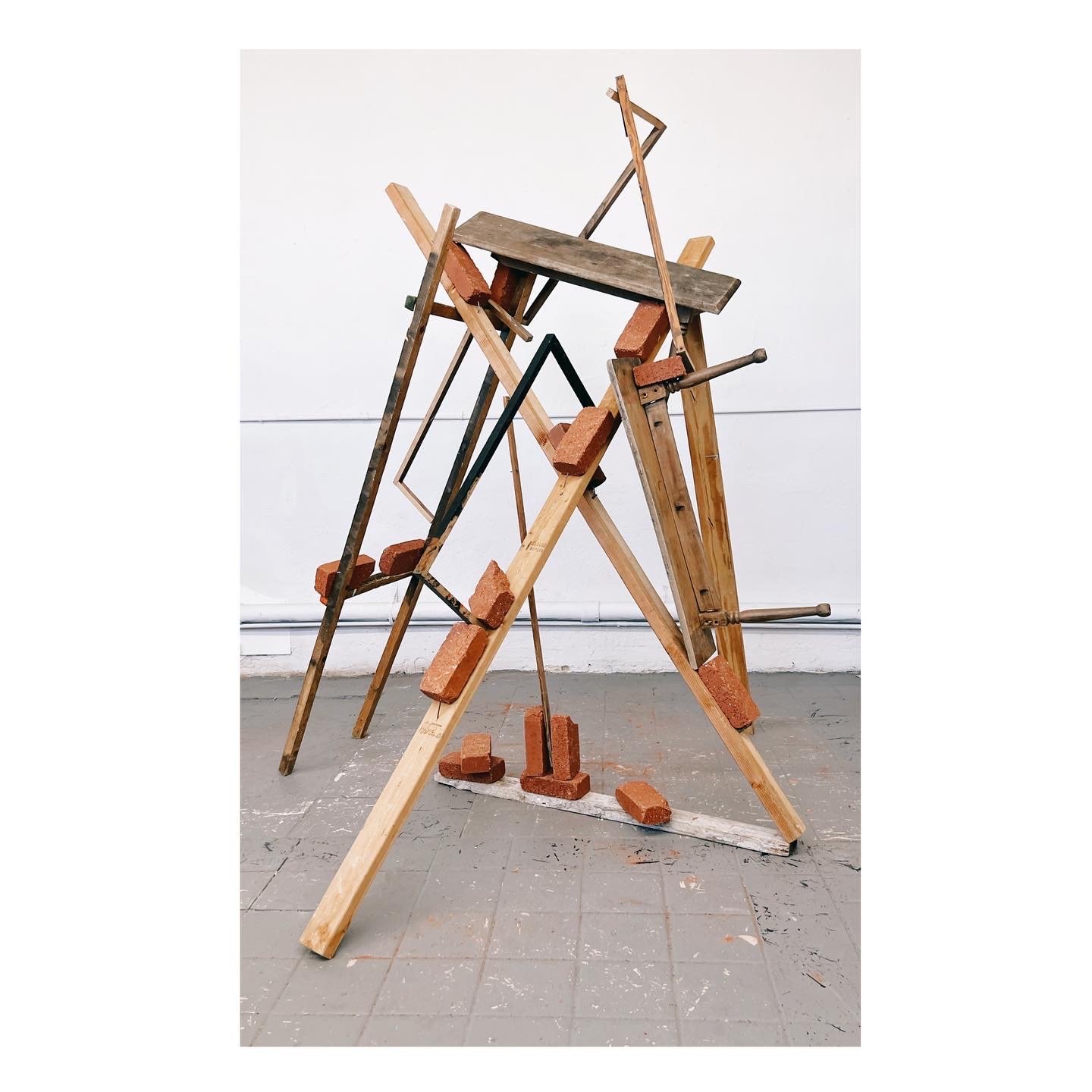
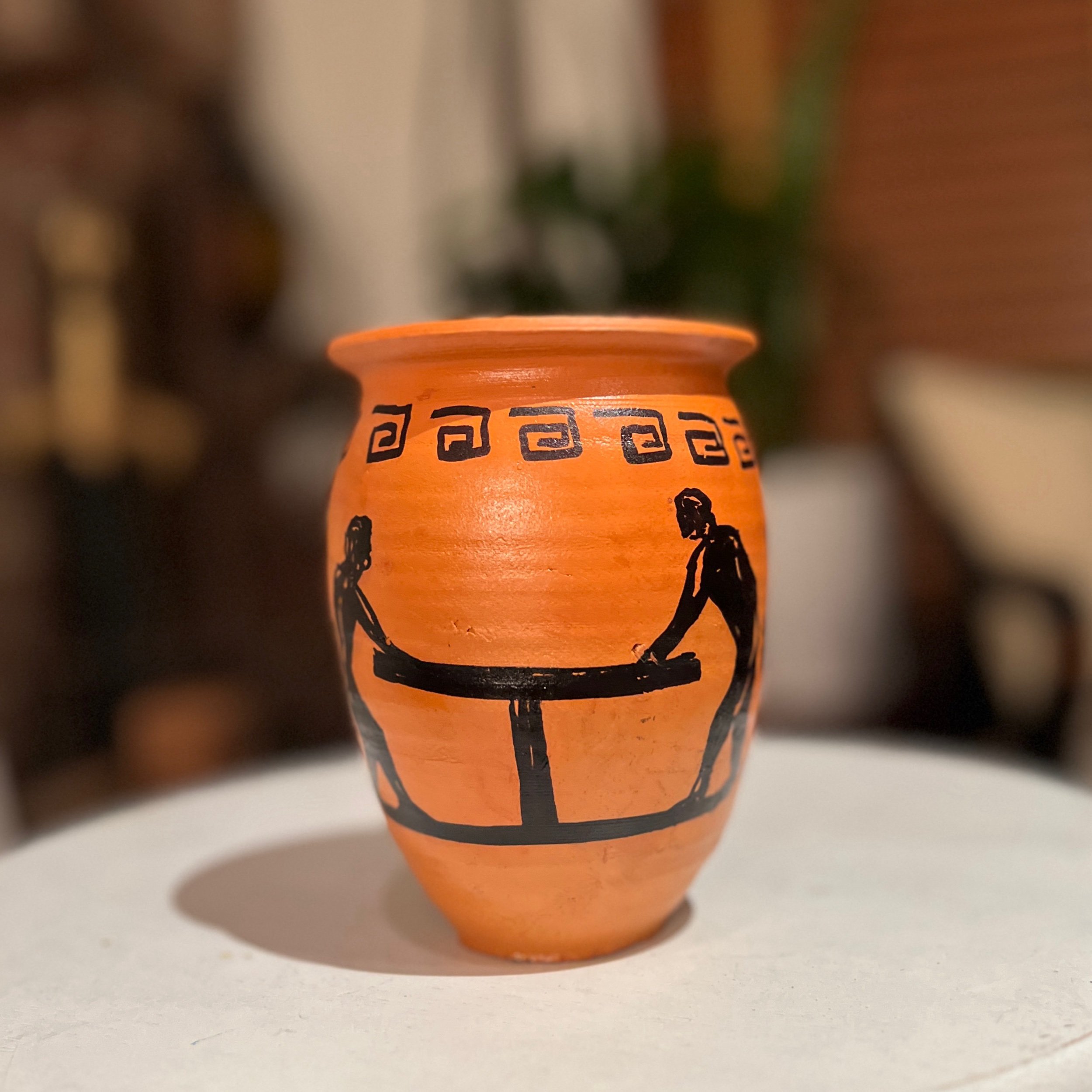
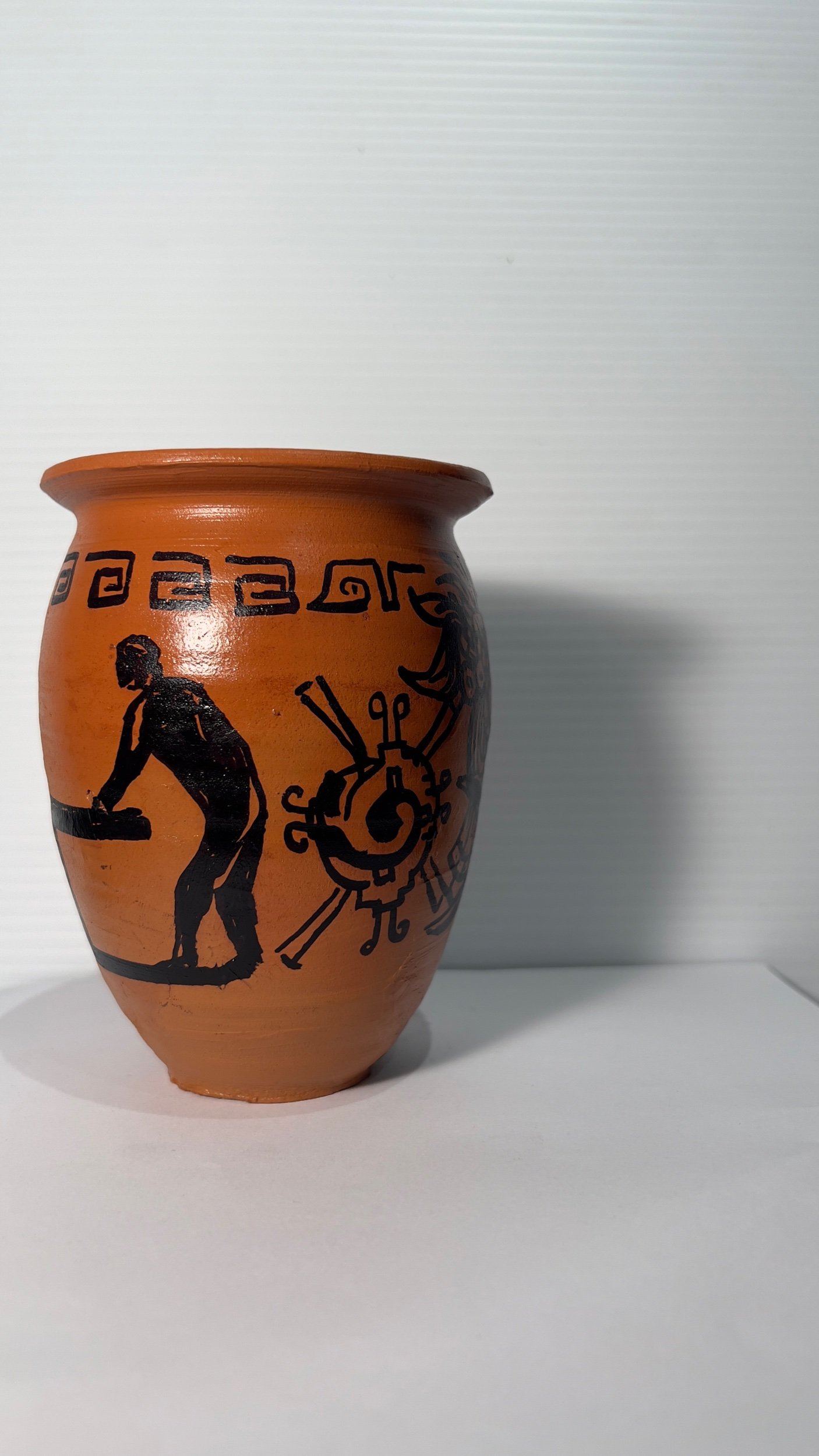

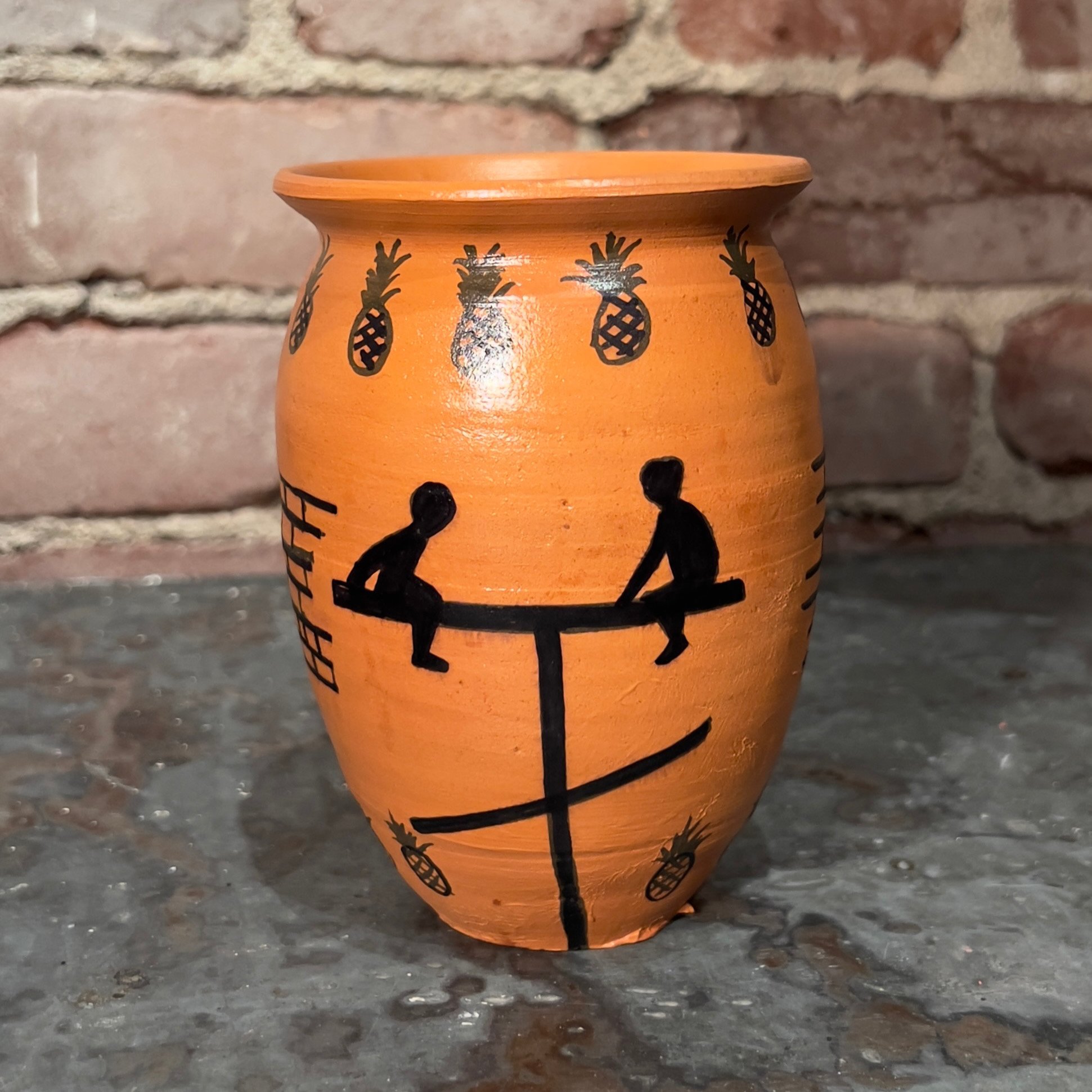
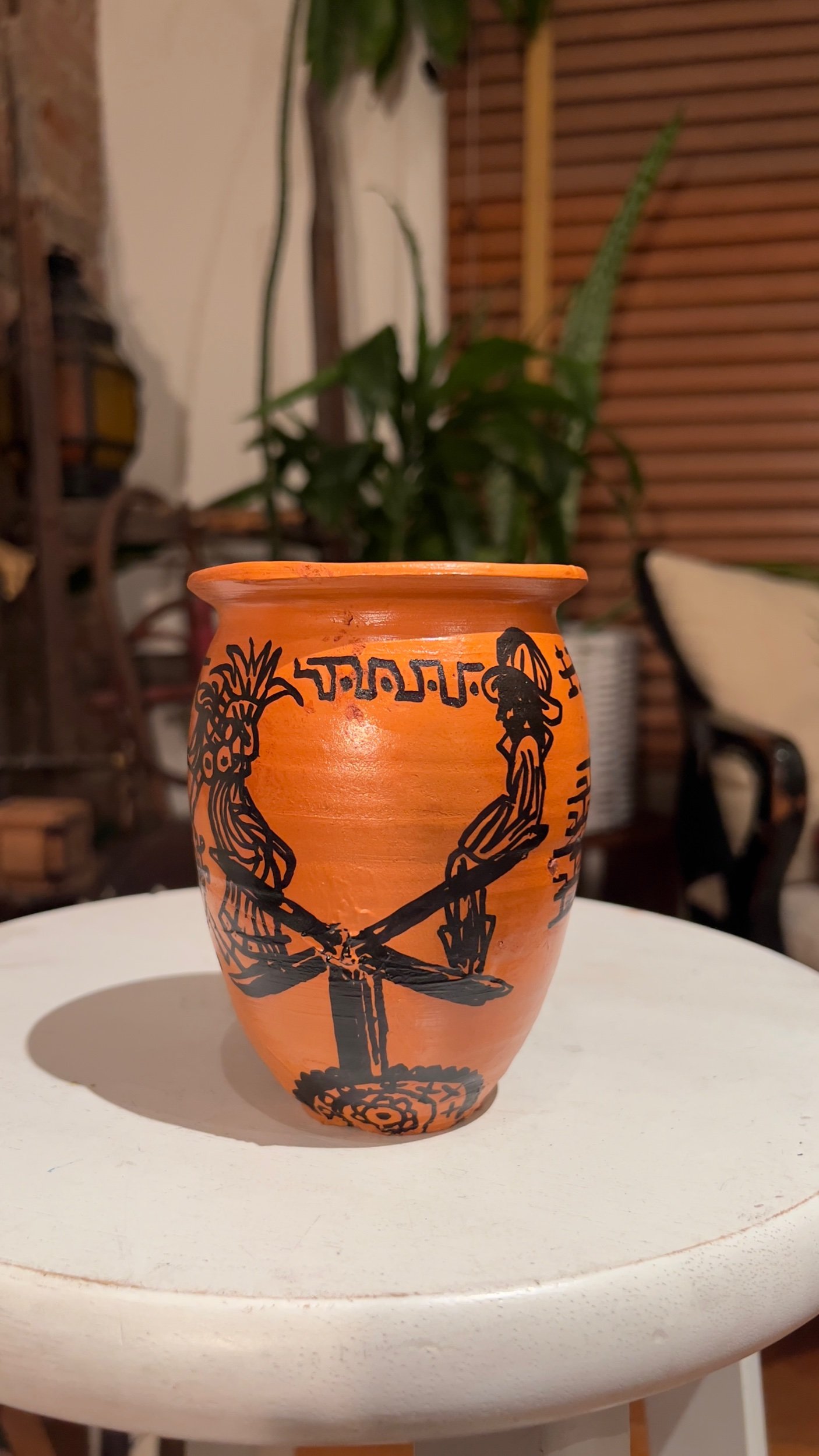
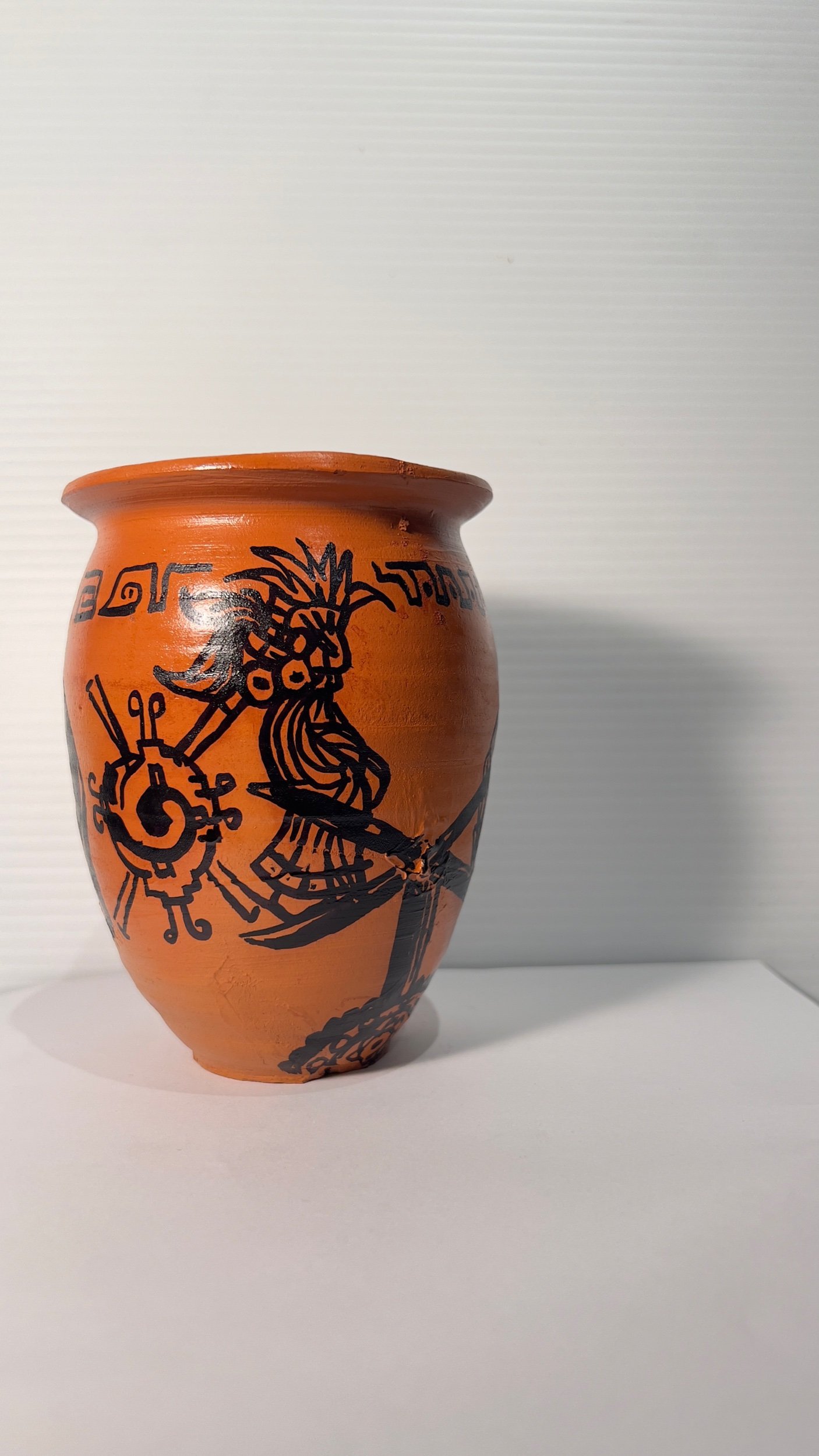
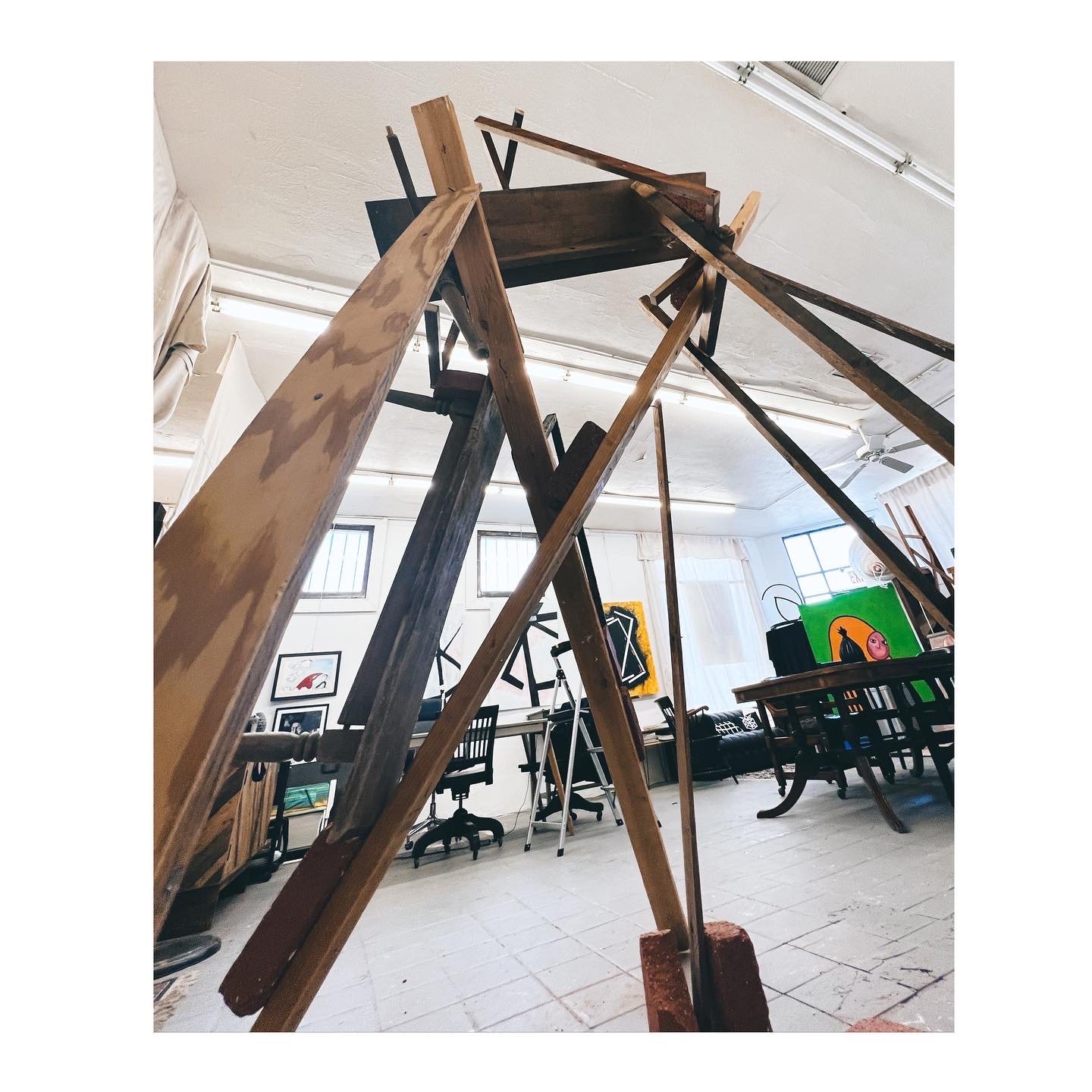
Artist’s Studio
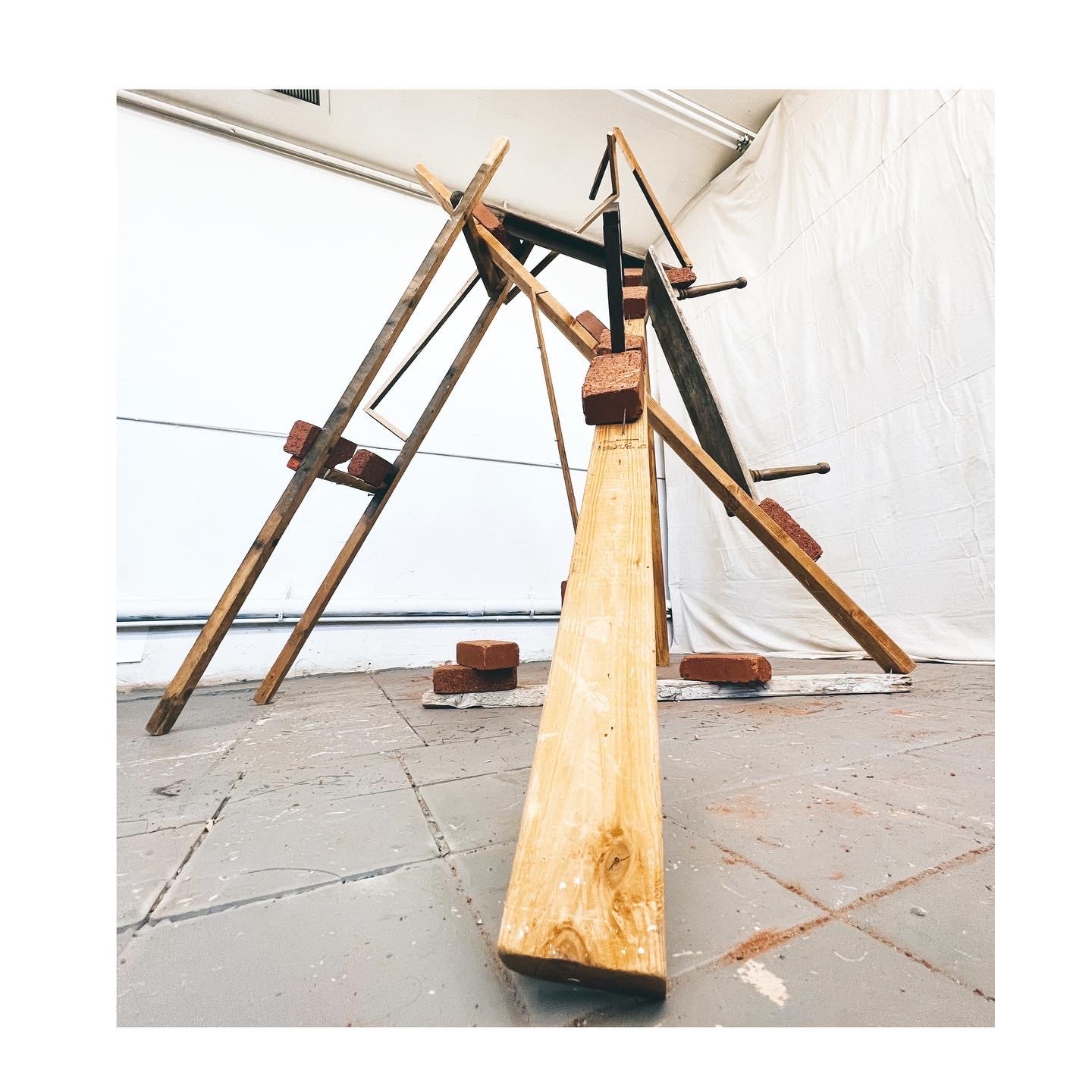
Artist’s Studio




























This installation by Noé Piña explores the fragile balance of personal, economic, and social systems. A baby grand piano, elegant yet exposed, teeters atop repurposed wood and bricks—symbols of labor and Piña’s childhood near a brick factory in Guadalajara. Nearby, a chandelier tilts on the floor, surrounded by bricks, glowing despite its fallen state. The contrast between luxury and raw materials reflects the tension between class and labor, stability and collapse. Playful yet sobering, it asks: what happens when balance is lost?
Repurposed & found materials, terracotta bricks wood planks, nails, baby grand piano, chandelier 2025
This installation by Noé Piña explores the fragile balance of personal, economic, and social systems. A baby grand piano, elegant yet exposed, teeters atop repurposed wood and bricks—symbols of labor and Piña’s childhood near a brick factory in Guadalajara. Nearby, a chandelier tilts on the floor, surrounded by bricks, glowing despite its fallen state. The contrast between luxury and raw materials reflects the tension between class and labor, stability and collapse. Playful yet sobering, it asks: what happens when balance is lost?
Repurposed & found materials, terracotta bricks wood planks, nails, baby grand piano, chandelier 2025
Repurposed & found materials, terracotta bricks wood planks, nails, baby grand piano, 2024
This installation by Noé Piña invites viewers to reflect on the delicate equilibrium of the systems we inhabit—personal, economic, and social. A baby grand piano, elegant and refined, yet exposed and vulnerable with its missing lid teeters at an angle, precariously supported by repurposed wood planks studded with nails. Balancing atop and beneath these planks are bricks—symbols of labor, construction, and Piña’s childhood memories of growing up next to a brick factory in Guadalajara, Mexico.
The juxtaposition of materials speaks to the fragility of balance, where the weight of luxury and class (the piano) is held in place by the raw and rough (the bricks and planks). This contrast becomes a metaphor for the tension between economic and social divisions, not presented in protest but as an enduring and unresolvable reality of the human condition.
There is a playful nostalgia in the work, evoking the teeter-totters of Piña’s youth, where balance was a physical and experiential lesson. Yet, the precariousness of this composition reminds us of the instability that comes when systems—whether personal or societal—fall out of balance. The work invites us to confront the fragility of what we often take for granted, leaving us to question: what happens when balance is lost?
This installation by Noé Piña explores the fragile balance of personal, economic, and social systems. A baby grand piano, elegant yet exposed, teeters atop repurposed wood and bricks—symbols of labor and Piña’s childhood near a brick factory in Guadalajara. Nearby, a chandelier tilts on the floor, surrounded by bricks, glowing despite its fallen state. The contrast between luxury and raw materials reflects the tension between class and labor, stability and collapse. Playful yet sobering, it asks: what happens when balance is lost?
Repurposed & found materials, terracotta bricks wood planks, nails, baby grand piano, chandelier 2025
This sculptural installation by artist Noé Piña features a large seesaw-like structure constructed from reclaimed terra-cotta bricks and wood planks, materials rooted in Piña’s personal and familial history. Positioned atop a stack of bricks, the wooden beam balances precariously—its weight distribution suggesting themes of labor, inequality, and resilience. In the background, three vibrant paintings echo the forms and colors of the sculpture, reinforcing a narrative of construction, struggle, and transformation. The piece invites viewers to reflect on systems of support and the delicate equilibrium required to sustain growth.
The Balancing Act of Music
This photo captures a site-specific miniature sculpture by Noé Piña, positioned before the iconic medieval Walls of Ávila in Ávila, Spain. The small-scale seesaw, crafted from hand-formed, red-toned bricks and wooden beams, mirrors Piña’s larger works—exploring equilibrium, labor, and resilience. By placing this intimate sculpture against the monumental backdrop of Ávila’s fortified walls, Piña draws a dialogue between personal memory and historical permanence, inviting reflection on the endurance of both structures and people across generations.
Walls of Avila, Spain 2024
Set in front of the Palacio de Blasco Núñez Vela, and The Cathedral of Saint Teresa in Ávila, Spain, this sculptural intervention by Noé Piña continues the artist’s exploration of balance, resistance, and spatial dialogue. The small-scale seesaw sculpture, composed of red bricks and wooden planks, echoes themes of architectural weight and human resilience. By placing this delicate construction amid monumental historic architecture, Piña creates a visual and conceptual contrast that invites viewers to consider the interplay between personal memory and institutional power.
Plaza Mayor, Avila Spain 2024
Artist’s Studio
Artist’s Studio